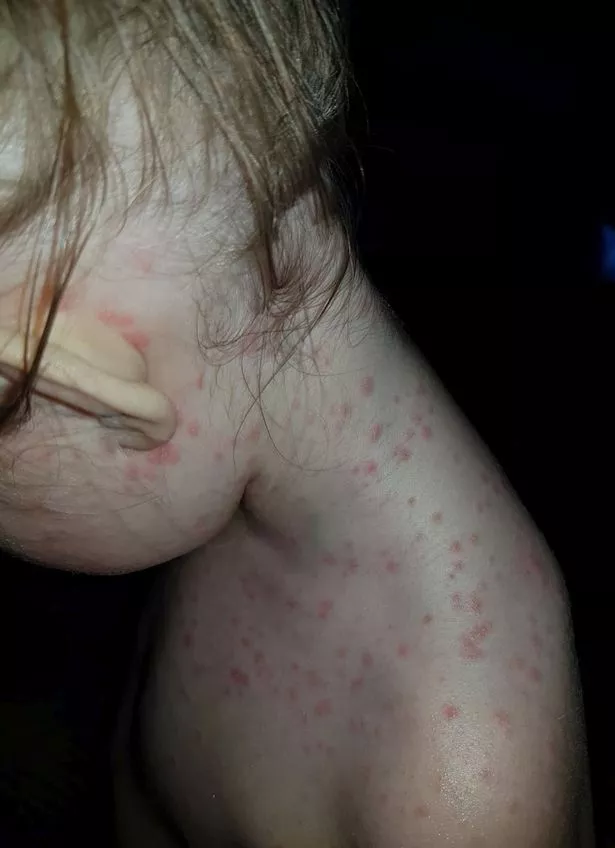Chicken Pox vs Hand, Foot, and Mouth Disease: What Parents Need to Know
Hey there, super parents! Are you grappling with the spots and dots of childhood illnesses? Fear not, because this cheerful and comprehensive guide is here to brighten your day with all the essentials on Chicken Pox and Hand, Foot, and Mouth Disease. These common childhood illnesses can cause worry, but with a sprinkle of knowledge and a dollop of care, you’ll be well on your way to nurturing your little ones back to their bubbly selves.
Let’s dive in and unwrap the mysteries of these spotty adventures!
Spotting the Differences: Chicken Pox vs Hand, Foot, and Mouth Disease
It’s easy to confuse one rashy condition with another, but each has its unique calling card. Chicken Pox, caused by the varicella-zoster virus, is like the classic childhood rite of passage, featuring an itchy, blister-like rash spreading across the body. Hand, Foot, and Mouth Disease, on the other hand, is caused by enteroviruses, presenting with sores in the mouth and a rash on the hands and feet.
The Itchy Intruder: Chicken Pox
Chicken Pox often starts with a fever, headache, and a little bit of fatigue, followed by the signature rash. These itchy little blisters will show up in waves, so be prepared for a few rounds of red-dot spotting. Once the blister pops and crusts over, it’s no longer infectious, which means the end is in sight!
The Spotty Bandit: Hand, Foot, and Mouth Disease
When it comes to Hand, Foot, and Mouth Disease, the name pretty much gives it away. Look out for painful sores in the mouth and a rash or blisters on the palms, soles, and sometimes the buttocks. Fever and a sore throat can also join the unwelcome party. Luckily, this viral visitation tends to be a brief one, usually waving goodbye after a week or so.
Transmission: How do these illnesses spread?
It’s like a mini-detective game figuring out how these pesky illnesses spread. For Chicken Pox, the culprit is usually sneezing, coughing, and direct contact with the fluid from those pesky blisters. For Hand, Foot, and Mouth Disease, close personal contact, coughing, sneezing, and contact with contaminated objects are the usual suspects. Practicing good hygiene is like being the Sherlock Holmes of illness prevention!
Symptom Checker
- Chicken Pox:
- Fever
- Tiredness
- Loss of appetite
- Headache
- Itchy rash that turns into blisters
- Hand, Foot, and Mouth Disease:
- Fever
- Reduced appetite
- Sore throat
- Painful mouth sores
- Rash on hands and feet
Treating the Troubles: What Can Parents Do?
Besides a hearty dose of cuddles, each condition has its own set of comfort measures. For both illnesses, keeping your child hydrated is paramount. With Chicken Pox, calamine lotion and cool baths are the tickets to itch-relief paradise. Acetaminophen can also help with the fever and aches, but remember, no aspirin for these little chickens!
With Hand, Foot, and Mouth Disease, mouth pain can make eating tricky, so think cool, soft foods and plenty of comforting liquids. Over-the-counter pain relievers and mouthwashes can help soothe those sore spots.
Prevention and Vaccination
Fortunately, Chicken Pox can be prevented with a vaccine, to which we say hooray! The Hand, Foot, and Mouth vaccine is still in the land of scientific discovery, so for now, hygiene heroes, keep those hands clean, avoid close contact with those who are sick, and disinfect common areas regularly. It’s your frontline defense against these viral villains!
Still curious about how to best support your little one through Chicken Pox or Hand, Foot, and Mouth Disease? Keep on reading, as we’re about to explore even more tips, tricks, and soothing tactics to quell the qualms and quiet the quarrels of these common childhood conditions.
What to Expect: The Course of Illness and Recovery Time
Now, every child’s experience with Chicken Pox and Hand, Foot, and Mouth Disease can be as unique as their favorite ice cream flavor, but generally, there’s a typical path these illnesses will skate down. Let’s lace up and learn about the duration and stages of these spotty escapades for a smoother ride to recovery.
Chicken Pox:
- Incubation period: Typically 10-21 days after exposure
- Contagious period: About 2 days before the rash appears until all blisters have crusted over
- Illness duration: Usually 5-10 days
Hand, Foot, and Mouth Disease:
- Incubation period: Typically 3-6 days after exposure
- Contagious period: Can begin just before symptoms appear and continue until the rash has subsided
- Illness duration: Symptoms are usually mildest in young children and typically last 7-10 days
Up next, we’ll also explore home care strategies for your tiny patient, how to deal with possible complications, and when to seek medical attention. Plus, get ready for top-level tips on assisting siblings and the rest of the family in navigating through these poxy times with grace and good spirits. Sit tight, because our guide through the land of Chicken Pox and Hand, Foot, and Mouth Disease is on the way to making everything just a bit easier and a whole lot happier.

Five Things Parents Should Know in Preparing for Chicken Pox or Hand, Foot, and Mouth Disease
1. Home Isolation is Key
To prevent the spread of these highly contagious diseases, keep your child home from school or daycare. Ensure they understand the importance of not scratching and teach them to cough and sneeze into their elbow to minimize the spread of those pesky germs.
2. Get Creative with Comfort Measures
Your child might feel uncomfortable with the itchiness and sores associated with these illnesses. Loose-fitting clothing can make a big difference, and remember to trim those fingernails to prevent scratching. For Chicken Pox, try using oatmeal baths to soothe the skin, and for Hand, Foot, and Mouth Disease, rinse with warm salt water to alleviate mouth sore discomfort.
3. Know the Signs of Complications
While rare, complications can occur, especially in Chicken Pox. Keep an eye out for signs of bacterial infection of the skin or worsening symptoms like difficulty breathing, persistent vomiting, or stiff neck. These require immediate medical attention.
4. Sibling and Family Care
If you have other children or vulnerable family members at home, it’s vital to minimize their exposure. Disinfect toys and frequently touched surfaces daily, and don’t share towels or utensils. Check vaccination statuses, as the Chicken Pox vaccine has made the illness much less common and severe in vaccinated children.
5. Inform Your Support System
If your child is diagnosed with either Chicken Pox or Hand, Foot, and Mouth Disease, inform people who have been in recent contact with your child. This is especially important for pregnant women, the elderly, and those with weakened immune systems who may face more severe outcomes if infected.
These illnesses are not just a trial of the body but also of the family’s resilience and patience. Your loving care and attention to detail in managing these childhood illnesses can make a world of difference. With the right knowledge and preparation, you’ll be able to support your child’s journey back to health with confidence and cheer.
Home Care Strategies for Your Tiny Patient
When the doctor’s visits are over, and your child is nestled cozily at home, it’s up to you to become the healer-in-chief. Make sure to keep them comfortable with plenty of rest and encourage activities that don’t require too much energy but keep their minds off the itch or pain.
Dealing with Possible Complications
Always stay in touch with your healthcare provider and be aware of symptoms that may indicate a complication such as pneumonia for Chicken Pox or viral meningitis for Hand, Foot, and Mouth Disease. Early intervention is a winning strategy.
When to Seek Medical Attention
Seek medical attention when you notice any unusual symptoms or if your child seems to be getting worse instead of better. High fever, persistent pain, signs of dehydration, or difficulty breathing are all red flags. It’s always better to be safe and get things checked out!
Remember, every day is a step closer to full recovery and soon enough, your child will be back to their lively, joyful self, ready to explore the world with fresh energy. Keep smiling, super parents, because you’re doing great!
Stay tuned for more insightful tips and heartfelt advice to guide you and your family through this spotty journey, with a dash of fun, a smidgen of expertise, and heaps of care!
See more great Things to Do with Kids in New Zealand here. For more information see here
Disclaimer
The articles available via our website provide general information only and we strongly urge readers to exercise caution and conduct their own thorough research and fact-checking. The information presented should not be taken as absolute truth, and, to the maximum extent permitted by law, we will not be held liable for any inaccuracies or errors in the content. It is essential for individuals to independently verify and validate the information before making any decisions or taking any actions based on the articles.




